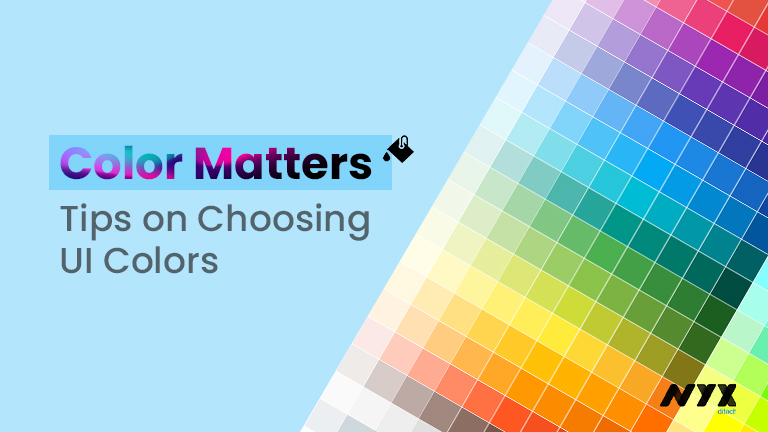Color Matters – Tips on Choosing UI Colors

Choosing the right scheme of colors for your user interface (UI) can make a lot of difference in how your audiences perceive your product and responds to your communication. Colors have an impact on emotions, they convey meaning, and demonstrates a visual hierarchy that builds a cohesive reception for your design.
However, with a broad palette of colors, it can be overwhelming to choose the right options and implement it optimally. Here are some tips to help you choose UI colors that will help you with make impact with your design and build a rewarding user experience.
Consider Your Brand Identity
Your brand’s color palette is a great starting point to build your UI color scheme. Here, if your brand has already come up with a guideline, consider implementing those colors to build your design. This helps to create a system of order and consistency across all brand touchpoints and reinforces your brand identity and recognition.
If you are pushing it from scratch, think about the design sensibilities and emotions you want to capture for your brand to covey the underlying meaning right. Use the right color psychology to choose colors that align with those characteristics. For example, blue is often associated with inspiration and trust, while green is associated with growth and harmony.
Use a Limited Color Palette
Too many colors can hamper your idea of communication and distract your users. It’s important to keep your palette of color limited to a few key color codes that work well together in relative combination. This not only helps to create a unified and synchronized design, but also makes it easier for users to understand the visual hierarchy of your UI.
Alternatively, you can limit your color palette by using a monochromatic color scheme. This involves applying different shades and tints of one color. Another option is to use an analogous color scheme, which involves using colors that are adjacent to each other on the color wheel.
Think About Contrast
Establishing contrast in your design is important for making sure that the elements and texts on the interface are legible and interpretable for all users.
One way to ensure sufficient contrast is to use a color contrast checker tool. Any expert UI designing professional can help you with choosing one. Any of these tools analyze the contrast between two colors and provide a score based on the Web Content Accessibility Guidelines (WCAG). You should hit for at least the ratio of 4.5:1 for normal text, and 3:1 for larger text.
Use UI Colors to Create Visual Hierarchy
You should consider creating a visual hierarchy that guides users through your UI design. By using color to differentiate between different forms of presentations and types of information, users can quickly comprehend the meaning and importance of each element.
For example, you can use a bright, bold color for hero text, and a more muted color for side information. You can also use color to establish a difference between different types of content, such as titles and body text.
Test and Iterate UI Colors
Once you are done with choosing your UI colors, it’s important to run a pilot trial and test them with users to see how they respond. You can use A/B and split testing to compare different color combinations to get it to perform and deliver well as per your requirement.
It’s also important to iterate on your design based on user feedback. If users are not able to understand and interact with your UI design with ease, consider adjusting your scheme and pallet to create a more agreeable visual hierarchy.
To Conclude
Choosing the right scheme of colors of designing user interface is an important part of creating a great user experience. By considering your brand identity, using a limited color palette, thinking about contrast and visual hierarchy, you can achieve it right! Contact our team of experts to know more
Read more about color psychology in app design here.

